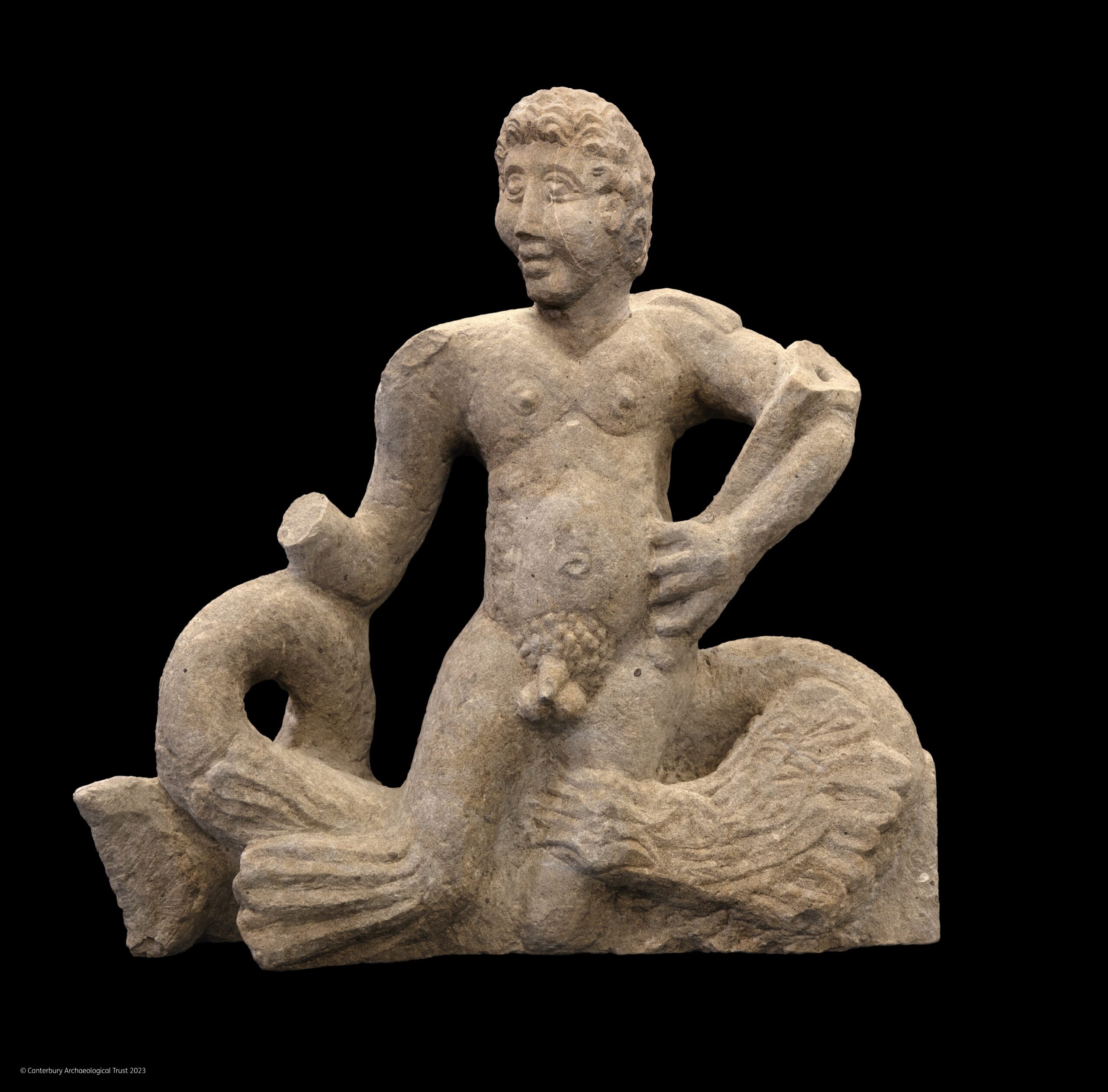
Chartway Group is a Kent-based development and construction group providing services to deliver improved communities and environments.

Westerhill Homes by Chartway is a private housebuilder with a single mission – to deliver quality housing developments across South East England.

LetLife is the newest addition to the Chartway Partnerships Group, a brand created specifically for private rented family homes.

Chartway Construction provides a complete range of building services across Kent, East Sussex, Surrey and South London.

Chartway Drylining specialises in drylining, screeding, plastering, & rendering for housebuilders and developers across the Kent and the South East.

Archaeologists from the Canterbury Archaeological Trust (“CAT”) have found a spectacular statue of the Roman sea god Triton during their excavations in connection with a new housing development being brought forward jointly by Moat Homes (“Moat”) and Chartway Partnerships Group (“Chartway”) adjacent to the A2 London Road (which follows Roman Watling Street) at Teynham in Kent. The excavations have discovered a mausoleum set in a walled and ditched enclosure alongside what was once the main road between London and the Roman ports of Richborough and Dover.
The site had initially been found in 2017, during trial trenching by Wessex Archaeology who discovered two perpendicular fragments of chalk wall foundation and two urned Roman cremation burials. As a result of these findings Swale Borough Council, following advice from archaeologists at Kent County Council Heritage Conservation (“KCC Heritage Conservation”), placed a planning condition for an archaeological excavation focused at the site of a planned roundabout alongside the A2 road. Earlier this year, archaeological consultancy RPS, A Tetra Tech Company agreed proposals for a half a hectare of archaeological excavation with KCC Heritage Conservation on behalf of Swale Borough Council.
CAT were appointed to undertake the archaeological investigation which commenced in late May 2023. Following site stripping and partial archaeological excavation the fragments of wall identified in 2017 were found to be elements of a 30m square walled enclosure around a c.8m square structure. Further excavation suggested the structure relates to a Roman mausoleum whose demolition fills contained a Roman coin of c.320 to 330 AD. The stone walled enclosure was set within a wider c.65m by 70m outer precinct enclosure ditch extending southwards to flank the former Roman road, whose probable roadside ditch was also partially exposed immediately adjacent to the A2.
Several Roman and possibly later burials were identified during the excavation both within and immediately adjacent to these enclosures, some of which contained grave goods. The most spectacular find was a unique stone statue of sea god Triton, son of Poseidon / Roman Neptune (or a Triton, one of the minions of Neptune). The statue was found ritually placed within a disused clay-lined water tank, along with burnt fill material, beyond the south-east corner of the outer ditched enclosure (where the enclosure takes a double ditched form possibly to define a track heading north-east from the main Roman road). A further possible small (c.1m square) monument or statue base was found to the south of the walled inner enclosure. These associations suggest the enclosure complex and central mausoleum was a funerary site of a wealthy local family (possibly associated with a Roman villa found previously at Bax Farm further to the north) and dedicated to Roman maritime deities.
Weekly meetings have been held throughout the ongoing excavations with the RPS (A Tetra Tech company) consultant, CAT, Chartway and KCC Heritage Conservation’s team to review site progress, excavation methodology and the importance of the Roman discoveries. Specialist advice is also being provided by Historic England. Happily, the preservation of the central mausoleum’s foundations within the soft landscape centre of the roundabout zone, along with the precinct wall has been found to be feasible and work is underway to ensure those key remains are carefully buried and retained.
The Triton statue has been carefully lifted and removed from the site for initial conservation works which have revealed the fascinating detail and craftmanship of the piece. Further research into the statue itself and the circumstances of its ritual burial are on-going.
Steve Cresswell, Group CEO at Chartway, on behalf of the Chartway and Moat partnership commented:
“Chartway and Moat are delighted with this exciting discovery. We love the homes we deliver for our partners and communities across the South East and love to celebrate our rich local history. We want to help people connect to the places in which they live through the preservation of local heritage, and by bringing to life the stories that surround it.”
“We are continuing to work with KCC Heritage Conservation, RPS, and CAT to ensure the key elements of the mausoleum and precinct walls are preserved below protective layers within the landscaped centre of the roundabout. Using innovative ideas and working with the archaeological team as well as the local community, we will be exploring ways in which these finds can be revealed to the public and enjoyed by future generations.”
Dr Richard Helm, Senior Project Manager, CAT stated:
“It has been a privilege to contribute to these findings which have highlighted Teynham’s highly important Roman heritage and also provides such a great opportunity to create a legacy for use by the local community.”
Robert Masefield, Archaeology Director for RPS the project archaeological consultant confirmed:
“We expected interesting Roman archaeology, perhaps a cemetery, but the finds including the lively and unique statue of a Triton and the mausoleum remains have by far exceeded that. These finds are now part of Teynham’s local legacy and the nations rich Roman story. Further study will place the findings in their full historical context.”
Simon Mason, Principal Archaeological Officer, Kent County Council stated:
“This area of North Kent, where the main Roman road travelled close to the many inlets off the Swale is particularly rich in in Roman remains taking advantage of the sea and road connections. The Roman mausoleum is the latest spectacular discovery in Swale and is itself an outstanding and significant find which will add considerably to our understanding of the Roman landscape in this region.”
“I am fortunate in my work to regularly see many remarkable archaeological discoveries in Kent, however seeing the uncovering of the Triton statue was a very special moment indeed. It will be fascinating to follow the research into the statue and find out more about the ritual burial of it.”
Susan Carey, Cabinet Member, Kent County Council commented:
“I am thrilled by this find and to see how well everyone has worked together to ensure the site has been properly excavated. This could well be one of several such sites along the old Roman Road and this discovery may help in identifying further such finds in Kent.”
Councillor Mike Baldock, Heritage Champion, Swale Borough Council commented:
“This is an incredible and exciting discovery that once again underlines the rich heritage that we have in our Borough. The council regards Swale’s archaeology as one if its major assets which we are proud of and recognise in our Heritage Strategy. The site and the statue will generate a great deal of interest in our community, and we very much look forward to working with Chartway and the archaeologists to ensure that there are opportunities for local people to learn about and celebrate the finds and their Roman heritage.”
Dr Richard Hobbs, Senior Curator of Roman Britain, The British Museum commented:
“This is a really stunning piece of sculpture, undoubtedly of great significance to our understanding of Roman Britain and its place in the wider Roman Empire. It shows a Triton – half man, half fish – riding a sea monster. Although a few other fragments of similar sculptures are known from Roman Britain, nothing quite like this has been discovered before.”
For any further information on the archaeological excavation and artefacts discovered or for any other enquiries please email and [email protected]



